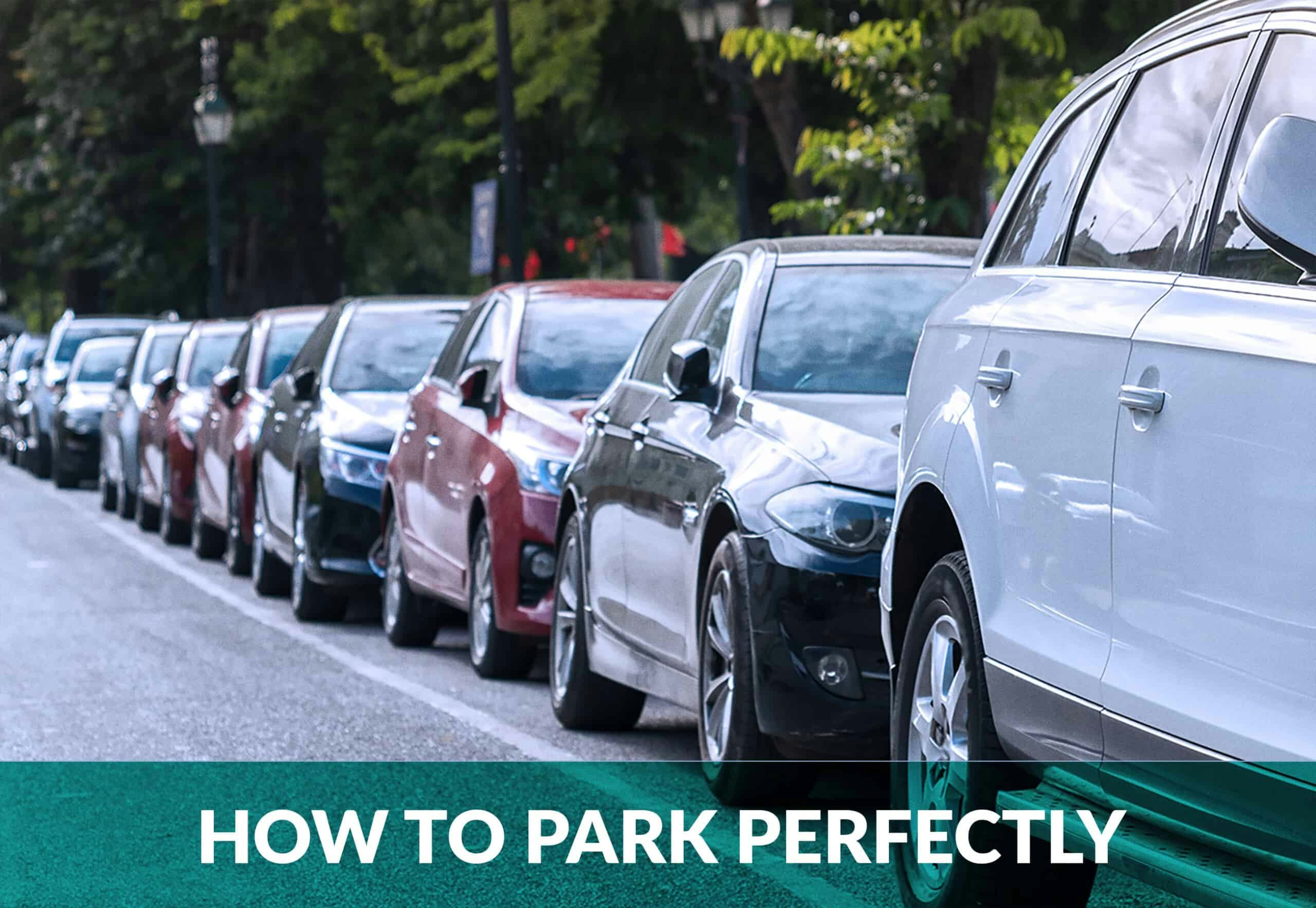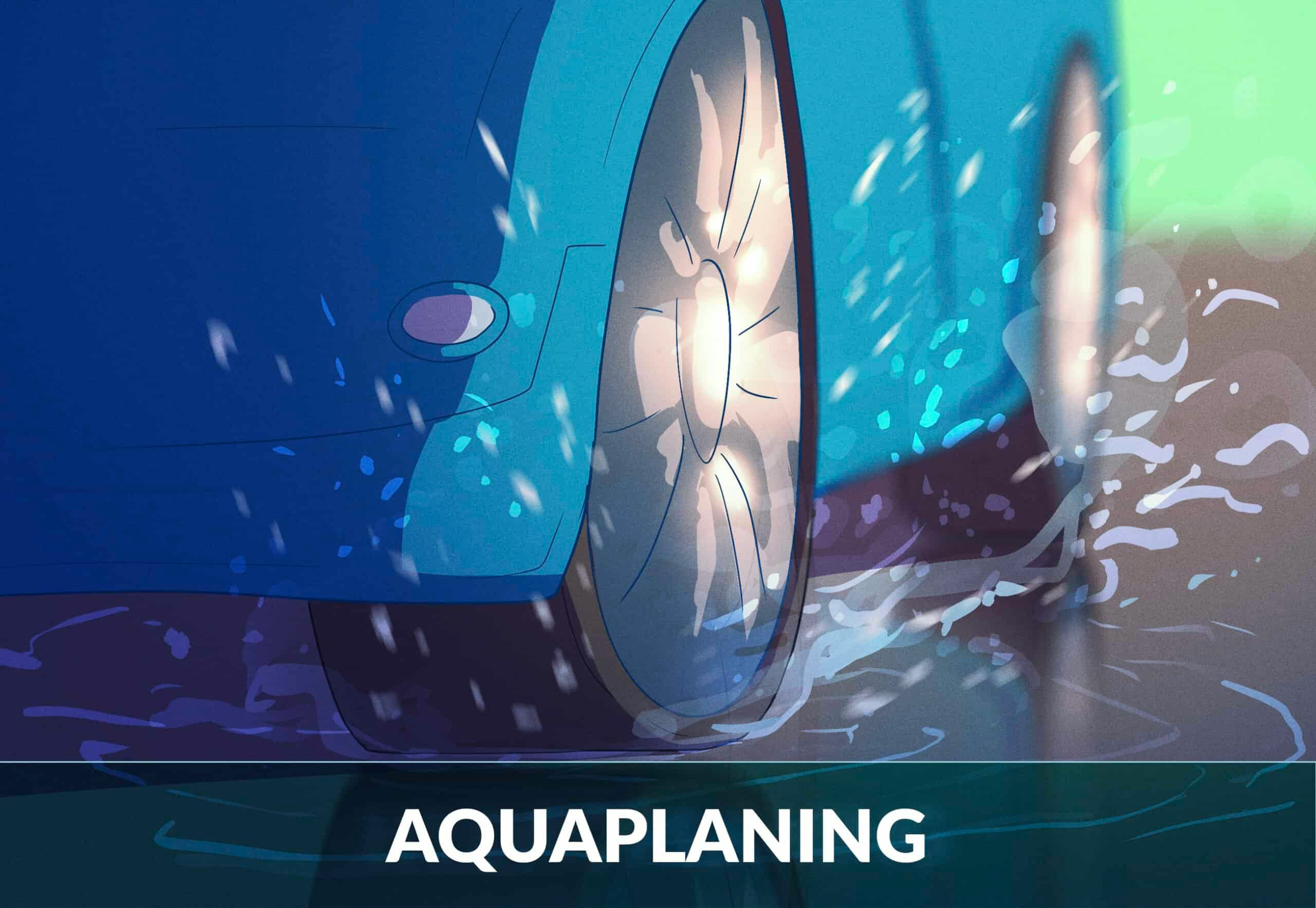
Aquaplaning: Why It Occurs, How to Avoid It & What to Do When Aquaplaning
Most drivers that have driven in heavy rain have most likely experienced aquaplaning, or hydroplaning as it is often called, even if it was just for a brief moment. You may have felt a sudden loss of control or feedback the moment your tyres lost traction. Such situations can seem harmless, but they can easily turn dangerous unless you know how to react.
In this article, we’ll go through:
- What aquaplaning is
- Why aquaplaning occurs
- How to avoid it
- What to do if you are aquaplaning
What is Aquaplaning?
Aquaplaning is the name of the phenomenon which occurs when a layer of water builds between your tyres and the road surface, which causes your tyres to lose traction and ‘surf’ on top of the water. People often use aquaplaning as a word to describe driving in slippery and wet conditions, but it really refers to the very specific situation when water causes your tyres to lose all available traction with the road surface.
Aquaplaning can be scary and potentially very dangerous as you won’t be able to steer or control your vehicle. In addition, doing the wrong thing (such as braking before you get your traction back) can worsen the potential outcome considerably.
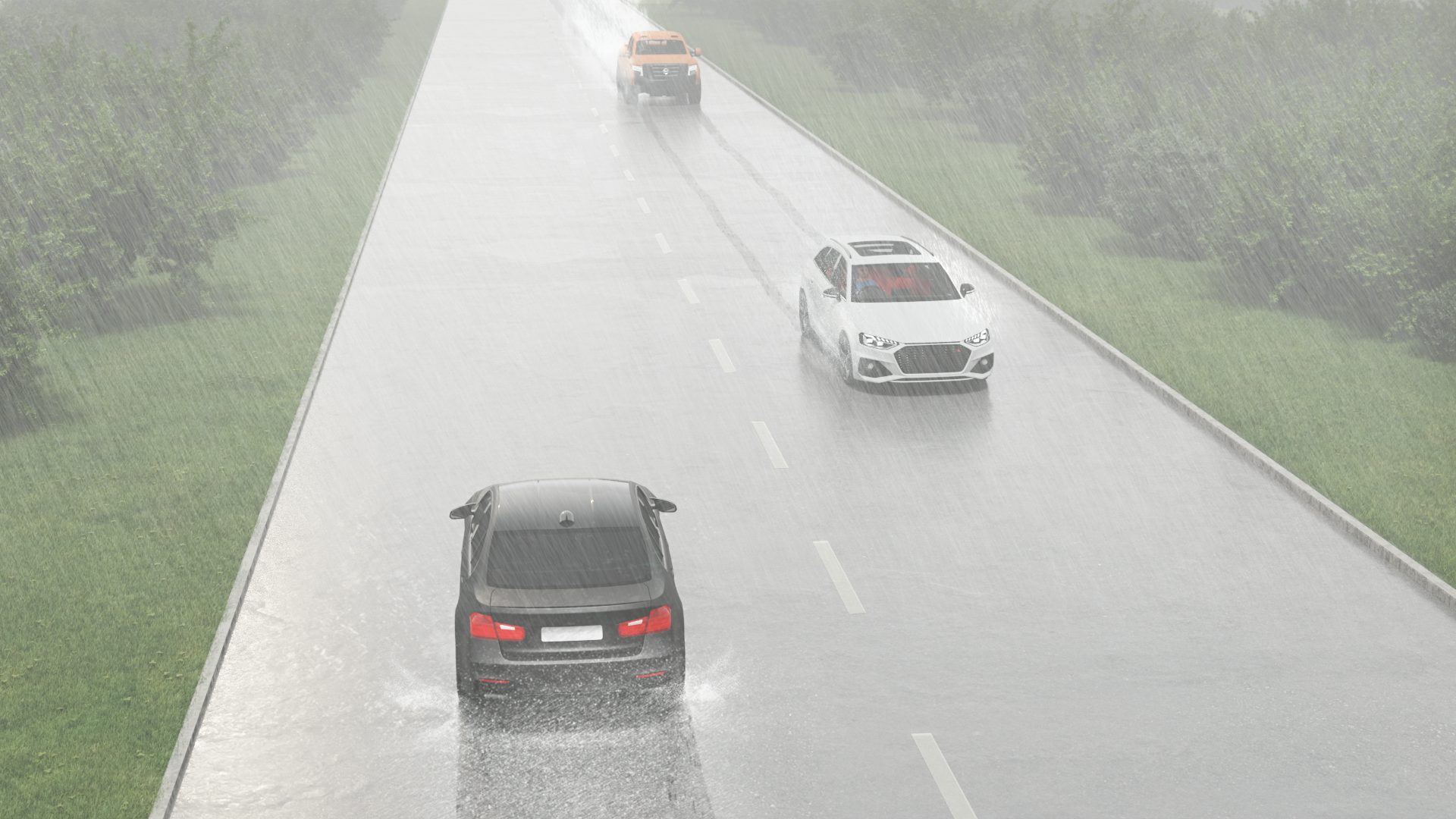
Why Does Aquaplaning Occur?
Aquaplaning occurs when your tyres cannot push away or remove the water in front of your wheel(s) fast enough, plain and simple. When you experience aquaplaning, it is almost impossible to control your car until you regain traction. You’ll be experiencing a complete lack of control over your vehicle, which may well lead to an accident.
Below, we’ve illustrated what happens when you aquaplane.
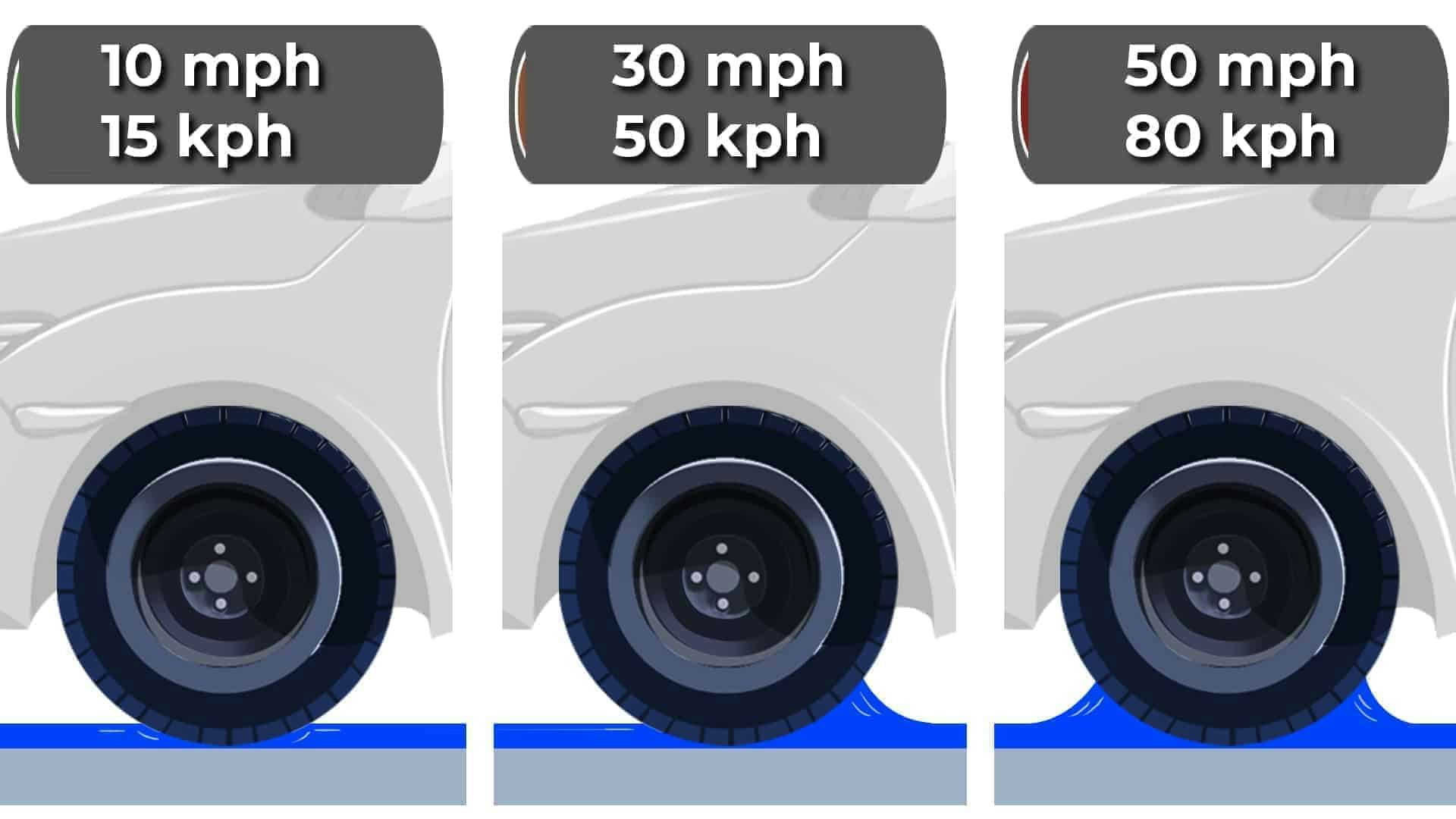
How To Avoid Aquaplaning
The follow-up question on everyone’s mind is; well, how can I avoid aquaplaning? To answer that you’ll need to know which factors will affect how fast your tyres can pump water away from the traction/contact point (i.e. the point between your tyres and the road).
Hydroplaning is usually caused by the following 5 factors:
- The amount of water on the road (the most important factor)
- Tyre tread depth
- Tyre width
- Tyre pressure
- The speed at which you are driving (this is the 2nd most important factor)
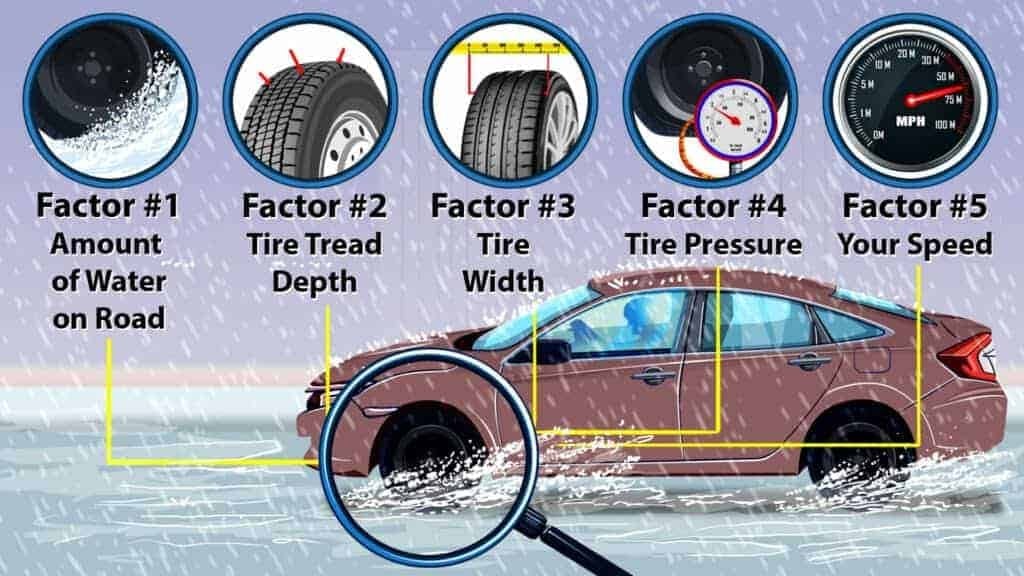
Once you know what to look for and how different factors affect the rate a tyre can move water away from the road surface to create traction, you will know what to look for to reduce the risk of hydroplaning.
In fact, depending on the shape of your tyres and the speed you are driving at, you may experience hydroplaning even when other cars won’t. Let’s go through why.
Factor #1 – Amount of Water on Road
The most important factor affecting hydroplaning is the amount of water on the road. Even with the best wet-tyres in the world, aquaplaning can still happen if there is enough water on the road. It occurs when you cannot push away the water between your tyres and the road surface which mean the amount of water on the road is a huge factor.
Factor #2 – Tyre Tread Depth
The tyre tread depth is simply another way of determining how large your grooves are. The grooves act as the channel which dispenses water away from under the tyre. The larger the grooves, the more water they will dispense.
The problem with tyre tread depth is that it wears down as you drive. This means a new tyre will have larger grooves than a used tyre, even if they are both legal to drive.
A tyre with an adequate tyre tread depth will always push away more water than a tyre with a tread depth that is less than the minimum level.
Factor #3 – Tyre Width
If you think about it, it’s quite logical that the width of the tyres will increase your risk of hydroplaning. Why? Because wider tyres will have to push away more water away due to their larger surface area. If you have unusually wide tyres, you should be extra careful in heavy rain or when driving through puddles at speed.
Factor #4 – Tyre Pressure
Keep your tyres properly inflated at all times to reduce the risk of hydroplaning. Overinflated tyres tend to reduce grip in most situations, including when wet. Underinflated tyres are more prone to hydroplaning as they won’t push away water through the grooves as effectively as they would have had they been inflated properly.
Factor #5 – Your Speed
Speed will affect how long your tyres stay in contact with a specific contact point and affect how much water your tyres are able to push away. The faster you drive, the harder it will be for your tyres to push the water away.
Think of it this way; if the grooves in your tyres can pump water away from the road at a certain pace, you cannot exceed the pace or they won’t be able to push water away fast enough.
While it may appear obvious, it bears to repeat. You must reduce speed when the roads are wet. Hydroplaning generally occurs at speeds higher than 80 km/h but may occur slower speeds – it all depends on the condition of your tyres and the amount of water on the road.
What To Do When Aquaplaning
If you notice a sudden loss of feedback from your vehicle when you are driving in very wet conditions, you are likely aquaplaning. You should then follow these 5 safety tips:
- Focus on keeping your wheels in the same direction as the road so you won’t drive off the road when you get traction back
- Not make any sudden turns
- Release your gas pedal
- Avoid hard braking (if you brake hard, you may lose control over your vehicle)
- Keep the clutch pressed down (if manual vehicle)
Once you get traction back, you can then apply the brakes or make the turns necessary to get back in position on the road. The best approach is to wait it out (as you can’t do anything!) and position your vehicle in the best possible position for when you get traction back.
If you attempt to apply the brakes as you hydroplane, what will happen is that you may randomly get traction for a brief moment with one of the wheels and turn your car in the wrong direction.

550+ exam-like questions
All you need to ace your test
Free trial
Recommended articles
Ace your theory test, guaranteed
Want to Be the Top School in Your Area?
- Simple & automated admin
- More time for teaching
- #1 learning materials for students

